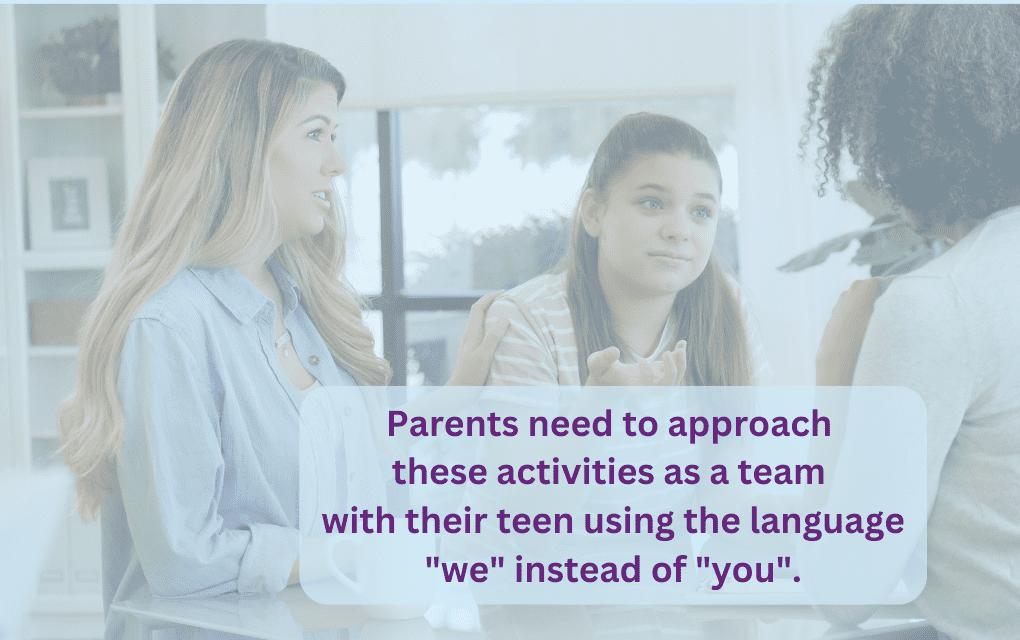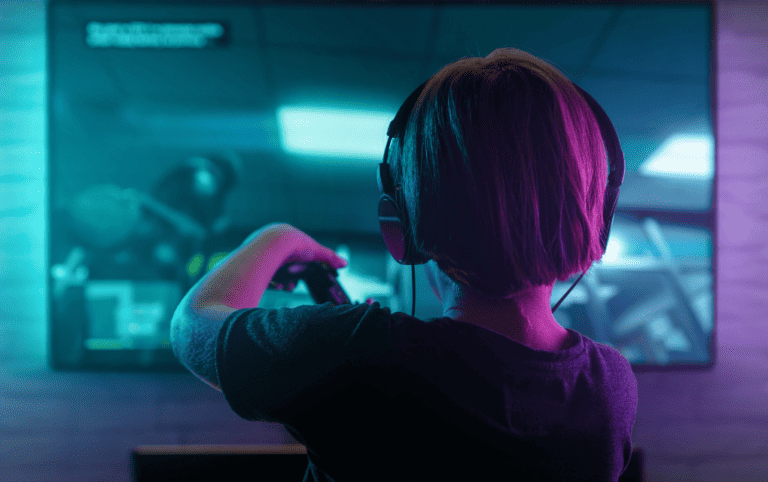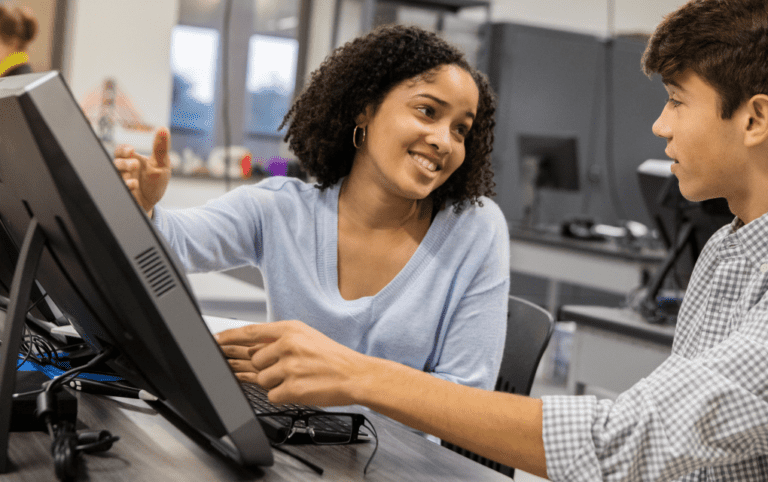How To Help Your Tween and Teen With Self Regulation: 3 Activities To Do Together
One of the most important skills for children to learn is self-regulation. This means being able to control their emotions, behaviors, and thoughts. It’s essential for academic success, social interaction, and overall well-being. Unfortunately, kids do not come wired with this skill from the get-go. In middle school, it can feel like you are starting from zero. This blog will give you three activities for you and your child to improve self-regulation skills.
Self-regulation is not a childhood skill. It is an ongoing skill that adults can and should continue to improve on. Even though they may learn tools and skills at one level, the context of life continues to change and challenge them.
We know children learn by example and through experiences. What many people do not realize is that we can model our own thought processes out loud so that they can learn how to communicate, reflect, and monitor their own thoughts. This is called metacognition.
As parents, we need to prepare our children, starting with the end in mind. What kind of adults do they need to be? What skills do they need to have to do that?

What are self-control and self-regulation?
What is Self Control and Self-regulation?
Self-regulation begins with self-control.
Self-control is acting before thinking:
- Blurting out
- Running across the street without looking
- Buying something
- Bingeing
Self-regulation is being able to control your energy, emotions, thoughts, and behaviors in a positive way. It is how we deal with stressors so that we can have a good foundation for other activities. Self-regulation is an executive function skill and a key element in emotional intelligence. By building these skills, you will help your child develop lifelong regulation techniques that will impact every part of their life.
Self-regulation is:
- Control how you react to intense emotions like frustration, excitement, anger, and shame.
- Calming oneself after intense emotions.
- Focus on a job.
- Transition to focusing on a new task.
- Control impulses (act without thinking).
- Do things that will help you get along better with other people.
Self-regulation is an executive function skill and a key element in emotional intelligence. By building these skills, you will help your child develop lifelong regulation techniques.
Working on these skills is just like learning a new instrument or a new sports skill. It is an ongoing process. When we are consistent in helping our children develop skills, they become independent kids. Seeing our children grow and thrive on their one is the most rewarding experience.
The following activities can be done with your child and will help establish an awareness of self-regulation d. You will use the language as “we” not “you”.

Activity One: Emotions and Feeling Wheel
“Hey, we have been having some super strong emotions lately. Sometimes, it is hard to define what they are and where they come from. I found this “Feelings Wheel” and thought we could look at it. It is kind of interesting.”
Look at it together and notice how specific the emotions are from the inside of the circle and they become more specific toward the outer circle.
“What was the last strong emotion you felt?” Work through it on the feelings wheel.
There is a good chance that your child will say, “I don’t know.” with a shrug. You go first.
Model your strong emotion for the child and talk out loud as you work toward the outside of the circle.
Here is an example:
My daughter took the cover off of her iPad and cracked the screen significantly. My response was very strong and not gracious. I was really mad.
Looking at the wheel, I would model my thinking process out loud.
“I was really angry and yelled while becoming critical, then dismissive. Wow. That definitely describes what I was feeling, but I didn’t respond well at all. I am sorry. I should have waited until that intense emotion diminished, then spoke in a calm manner.”
This short statement does several things. It acknowledges a past experience that wasn’t good. Communication helps you and your child understand the emotion and reaction. It also demonstrates your willingness to improve your own communication through intense feelings.
This is a win-win for everyone.
“I am going to put this on the refrigerator. It could be helpful for us both the next time we feel the intensity of any of these feelings. It would help us to communicate better.”
There is a reality that as you work on identifying very specific emotions, it will not go as smoothly as it does on paper. What will probably happen at first is that there will be a moment of extreme emotion. Once the dust has settled, you reflect on it and learn. This is how you use the language and learn the process that works for you and your child.
Activity Two: Riding the Emotional Wave
After an emotional moment (frustration, excitement, anger, happiness) ask this question:
How long do you think intense emotions last, like frustration, excitement, anger, and happiness? Would you want to do some research with me to see if that is a thing?
They may roll their eyes and be dramatic. But tell them that you are going to do it and write it out on the whiteboard.
Now, follow through. Set up a chart that looks like this:

After you collect time, what do you notice? How long do these feelings last? What did you do to regulate them? You want your child to see that feelings come and go just like a wave. Sometimes it will knock. you down and you have to ride it out. Other times, you can see it coming and decide if you want to dive in head first, jump, or run. No matter what, it will not last forever.
Activity Three: Goal Setting For Small Change
Another. part of self-regulation is setting goals, having the plan to accomplish them, and reflecting on the results.

You get a pen/paper or whiteboard. As a mom, you make a list of all the things you do not like to do. Your daughter does, too, Look at the lists.
- Estimate the amount of time each task listed takes.
- Unloading the dishwasher?
- Folding clothes?
- Taking out the trash?
- Getting things ready for the next day instead of 5 minutes before leaving in the morning?
Choose “one” thing to turn into a discipline. Write the “one” thing on the board as the goal. Start small to build lasting habits.
The goal is to instill self-discipline in the small things so that they can be self-disciplined in the big things.
How consistent can you both be in one week? Parents do this with them. It is a team activity.
Go for quick wins. Celebrate small wins.
BONUS CHALLENGE: Less Than A Minute? Do it NOW!
Estimate how long each activity takes. If it takes less than a minute, do it now. For example, putting your dishes in the sink or from the sink into the dishwasher. Less than a minute? Do it now.
Choose 2 “less than a minute” activities to work on.
This actually makes kids aware of time and that aids in long-term time management.
Follow Up:
As you see your child doing this, be very specific in your feedback.
“You really communicated what you were feeling, and I understand. Wow. That is amazing growth.”
“You have really been consistent with your _____________. You are maturing and I can see it.”
You can not microwave maturity. When building character and executive function skills, the process is ongoing. Remember, they need to relearn and apply skills to many contexts as they grow. It is not a sprint but a marathon, with you as their best guide.







